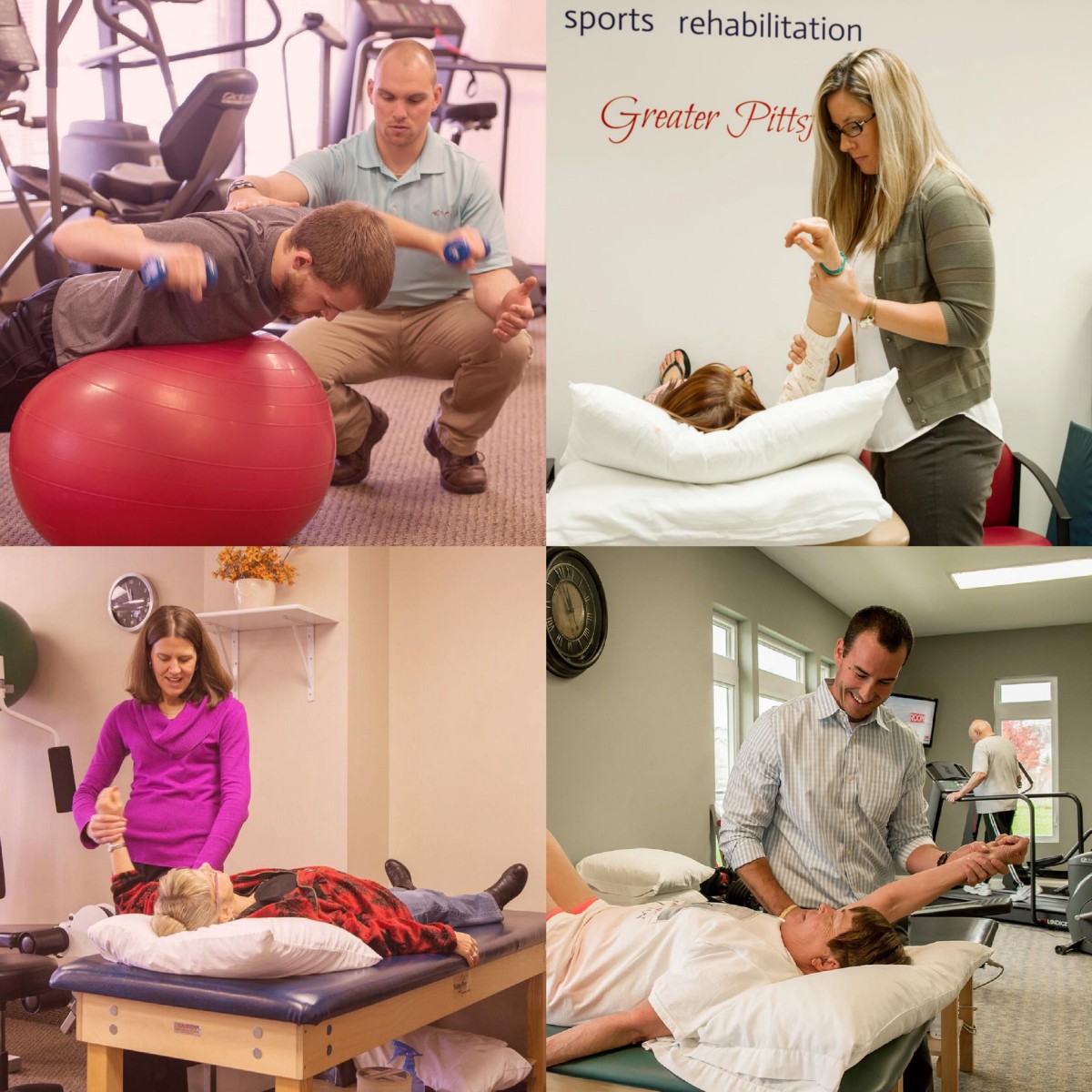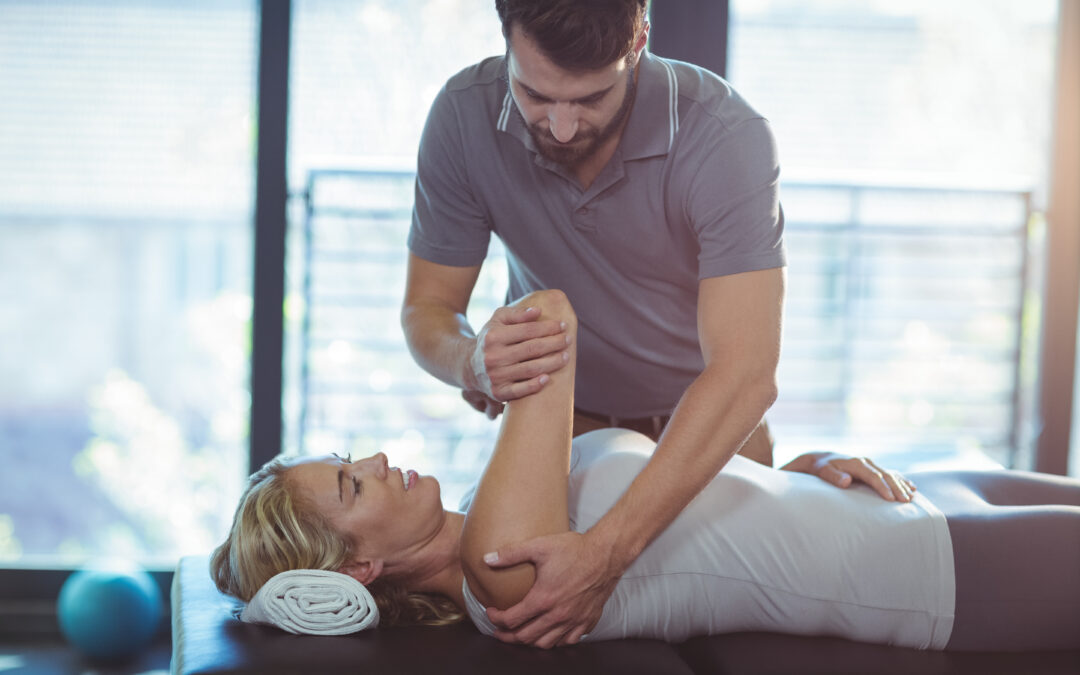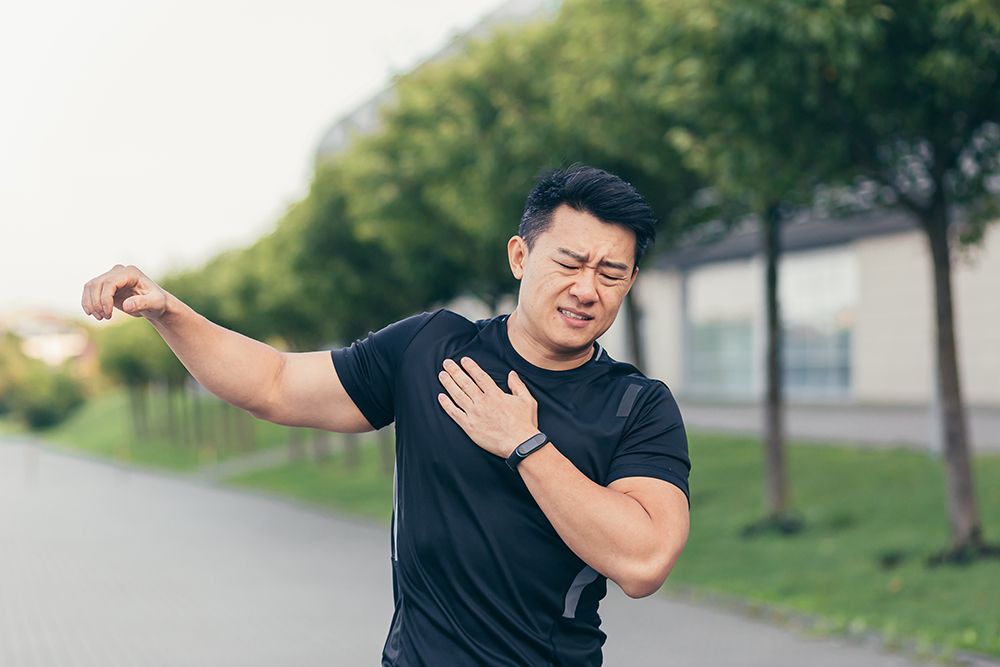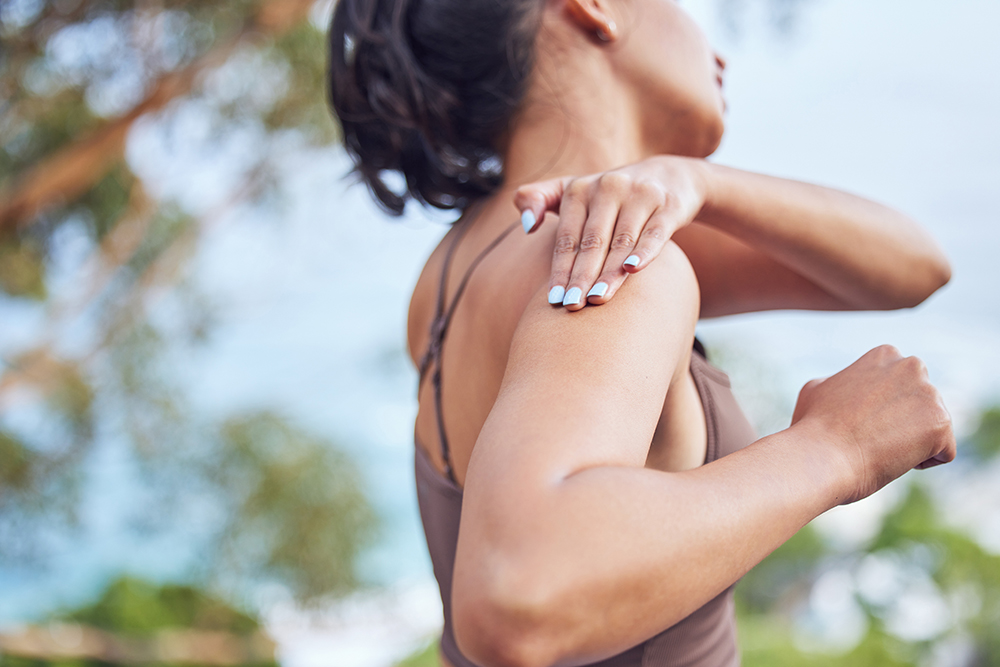It is estimated that up to 65% of people will experience shoulder pain at some point in their lives. Take a look at our latest article to learn more about what to do if you find yourself with a sore shoulder!
Does your shoulder ever hurt? Read on to learn more.
The shoulder is an extremely dynamic joint and one of the most mobile in the body. The trade-off for that mobility is stability and likelihood for injury. The shoulder feature the humerus (upper arm bone), scapula (shoulder blade), and clavicle (collar bone). The head of the humerus is very large compared to the socket portion of the joint and can be compared to a golf ball resting on a tee.
Due to the bony anatomy of the shoulder it relies heavily on dynamic stabilizers including the rotator cuff, postural muscles around the shoulder blade, and a cartilaginous labrum to help create some suction around the socket. The rotator cuff consists of 4 muscles (the supraspinatus, infraspinatus, teres minor, and subscapularis) with each muscle being responsible for a specific shoulder motion. When someone is told they have a rotator cuff tear they have in fact torn one or more of the individual muscles.
There are a few main causes of shoulder pain with the most common being shoulder impingement, RC tendinitis or tears, glenohumeral joint arthritis, bursitis, and instability of the shoulder.
Shoulder impingement is one of the most common conditions that we see at Lattimore PT. It can occur for a few different reasons. Most often it is caused by poor stabilization of the shoulder due to rotator cuff weakness or imbalances which leads the acromion to pinching the rotator cuff tendons when the arm is lifted away from the body. Over time, if not addressed this chronic pinching of the rotator cuff tendon can lead inflammation or tendinitis of the rotator cuff and eventually even to rotator cuff tears.
Physical therapy for shoulder impingement consists of exercise to strength postural/scapular stabilizers and the muscles of the rotator cuff. In addition manual therapy consisting of massage, gentle stretching, and joint mobilizations can be effective to restore normal mechanics of the joint. The PTs at Lattimore can also educate you on activity modification to allow you to continue doing what you love.
If you are having shoulder pain — or any pain for that matter -we strongly encourage you to consult with any of our highly trained physical therapists! Visit our locations tab to find the clinic closest to you or call 1–888-PT-ROCHS today and enter your zip code when prompted to be automatically redirected!
The Lattimore Physical Therapy & Sports Rehabilitation Network was founded by Physical Therapists John and Cindy Shuman in 1992. Since then Lattimore has grown to 20+ locations in 4 different counties.
What’s unique about Lattimore is our patient experience. We tailor your 1:1 treatment around your individual needs, conditions and goals. With us, you’re more than just a number. You’re a member of our local community and we’re invested in your success. Call 1–888-PT ROCHS to experience The Lattimore Way!
Follow us on social media
If you enjoyed this blog, please share with your friends!






